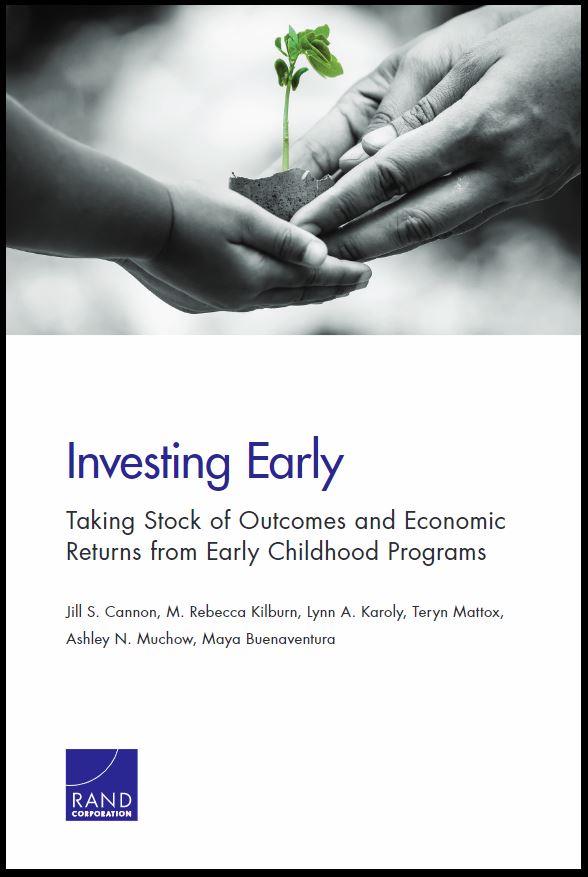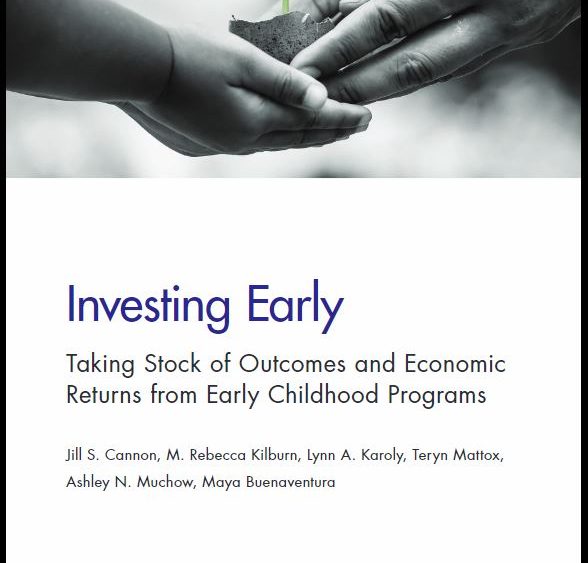 |
Over the years, research surrounding participation in early childhood programs—such as preschool, home visiting programs, and parent education programs—has continuously shown improved outcomes for children and families. A research report from RAND, Investing Early: Taking Stock of Outcomes and Economic Returns from Early Childhood Programs, reinforces the connection between early childhood programs and short- and long-term benefits for children’s health, behavior, and cognitive achievement, and upholds that investment in effective programs can often lead to increased financial return in the long run.
Early childhood programs exist in a network of supports for children and families that include afterschool and summer programs. Focusing on children from the prenatal period up to age five and their families, these early childhood programs included in this study encompass a breadth of support systems from prenatal parenting classes to early care and education programs for toddlers.
To conduct their study, RAND examined 115 programs with existing rigorous evaluations, and found that the majority of early childhood programs lead to positive child outcomes. Considering the wide array of early childhood programming available, the outcomes measured by this study and its evaluations reflect that diversity, which include examining behavior and emotions, cognitive achievement, short- and long-term health, educational attainment, future employment, and more.
Nearly 90 percent of the evaluated programs showed at least one positive child outcome, and across all programs, nearly 1 in 3 outcomes measured saw improvement. The majority of positive outcomes for children were seen in relation to behavior and emotion, cognitive achievement, and health. Overall, this shows that of these programs, the overwhelming majority lead to positive outcomes.
The report also found that early childhood programs can produce a significant return on investment. As part of this study, the authors examined evaluations from 19 programs containing a benefit-cost analysis and found that for every dollar invested in these early childhood programs, there was typically a $2 to $4 return in the long term. However, it is possible that the return on investment for these programs is even higher. With more research and longer-term follow-up with children and parents that have participated in early childhood programs, the impact of investment could be more fully understood.
For next steps in regards to policy, practice, and future research, a few of the author’s recommendations include:
- Expand the decision-making process. With the understanding that these programs overwhelmingly produce positive child outcomes, decision makers should expand their criteria for supporting early childhood programs to include considerations surrounding community needs and goals.
- Conduct more in-depth research. To fully understand the practices that lead to positive child outcomes, more research should be conducted exploring best practices for programming. Additionally, to understand the full impact of these programs, long-term studies of children and parents evaluating multiple outcomes should be considered.
- Invest in comprehensive benefit-cost analyses. Incentivizing programs and researchers to conduct benefit-cost evaluations will increase understanding of the economic impact of these programs and allow for comparison across programs to help determine best practices.
As a first step in the continuum of support for children and families, the benefits of early childhood programs are vast and numerous, yet there is still much more to understand about these programs’ comprehensive and long-term benefits. With ongoing research and investment in early childhood, the full effects of these programs have the potential to be realized. Continuing where these early childhood programs leave off, afterschool and summer programs can further support children’s health, academics, and social and emotional outcomes, as well as provide critical supports to parents.

Comments are closed.